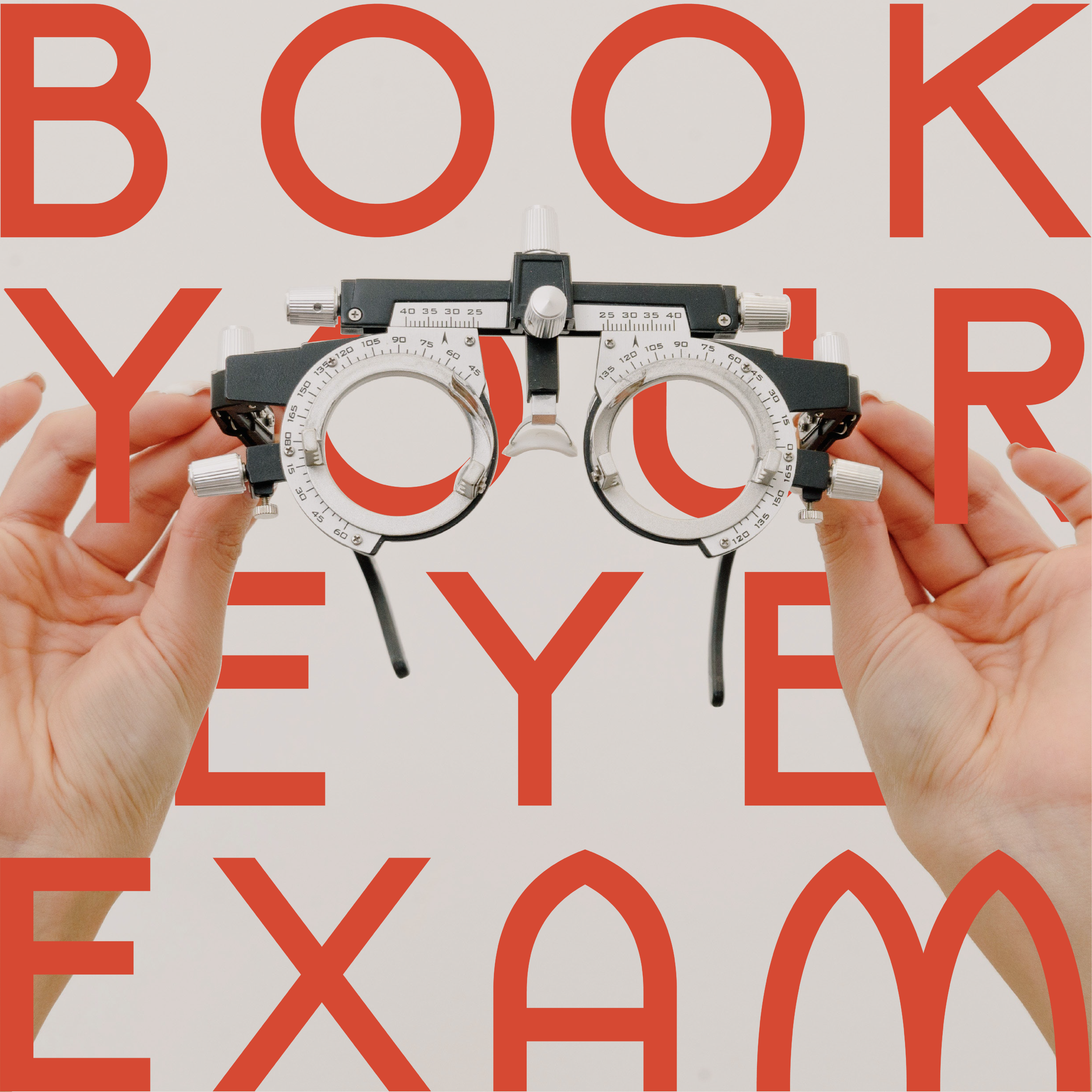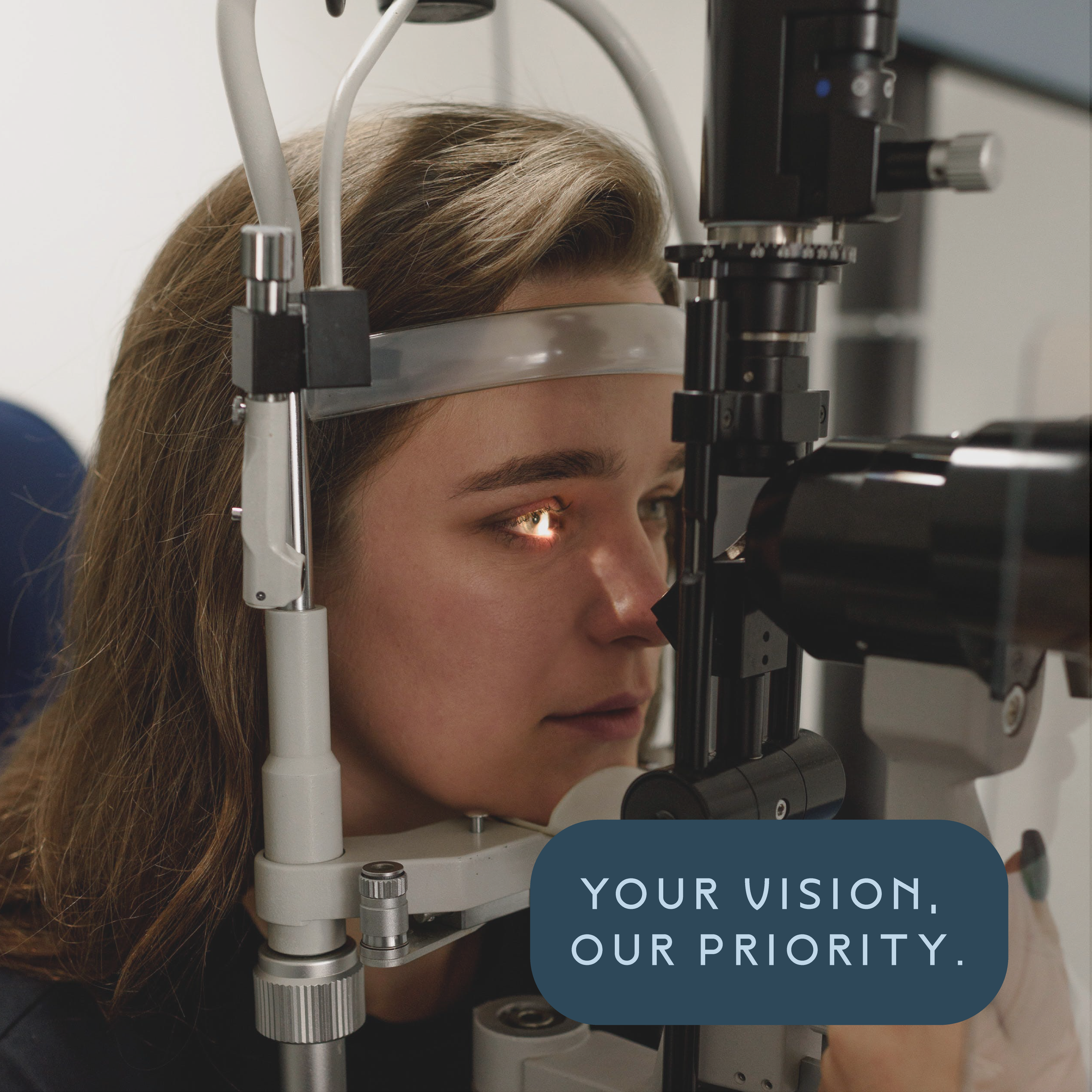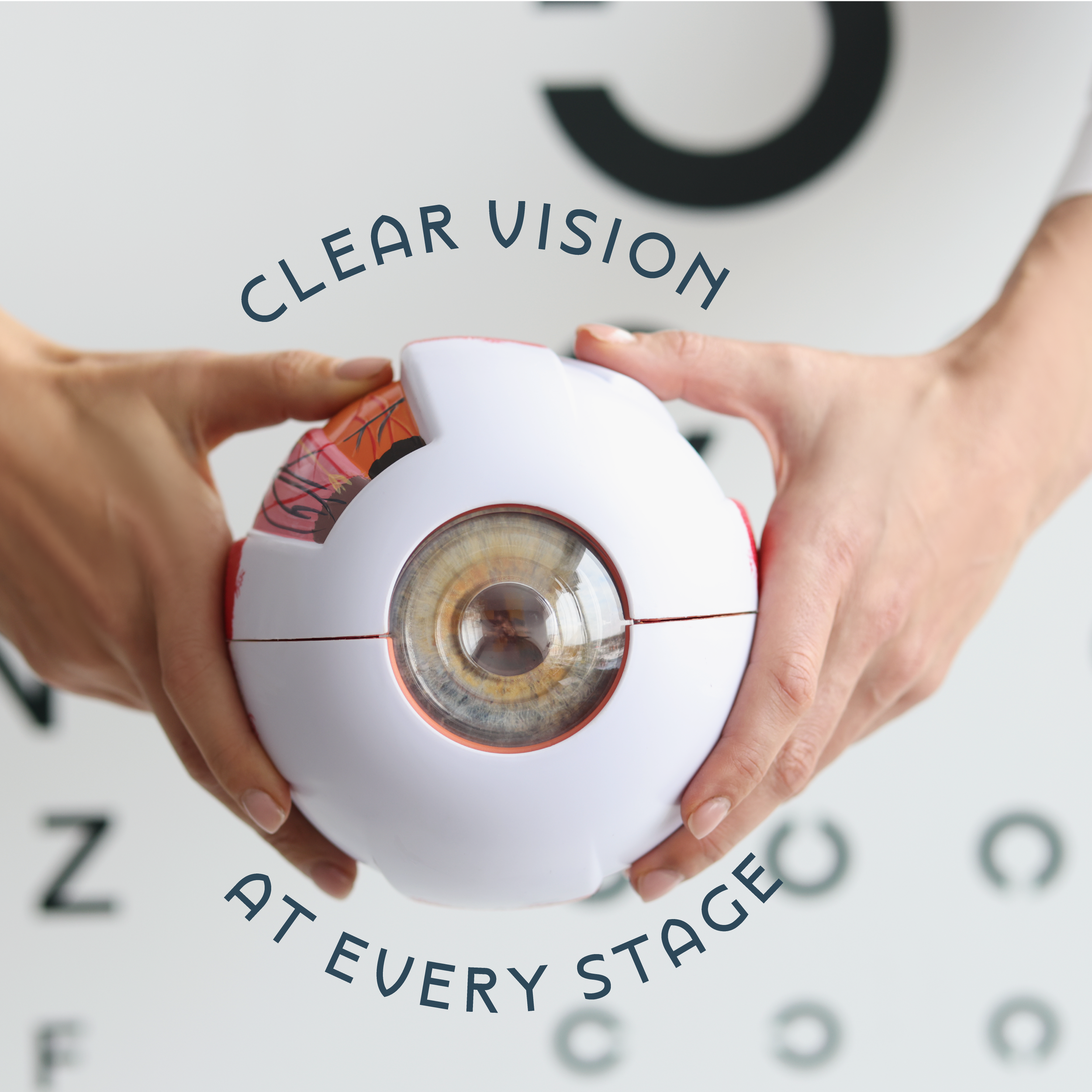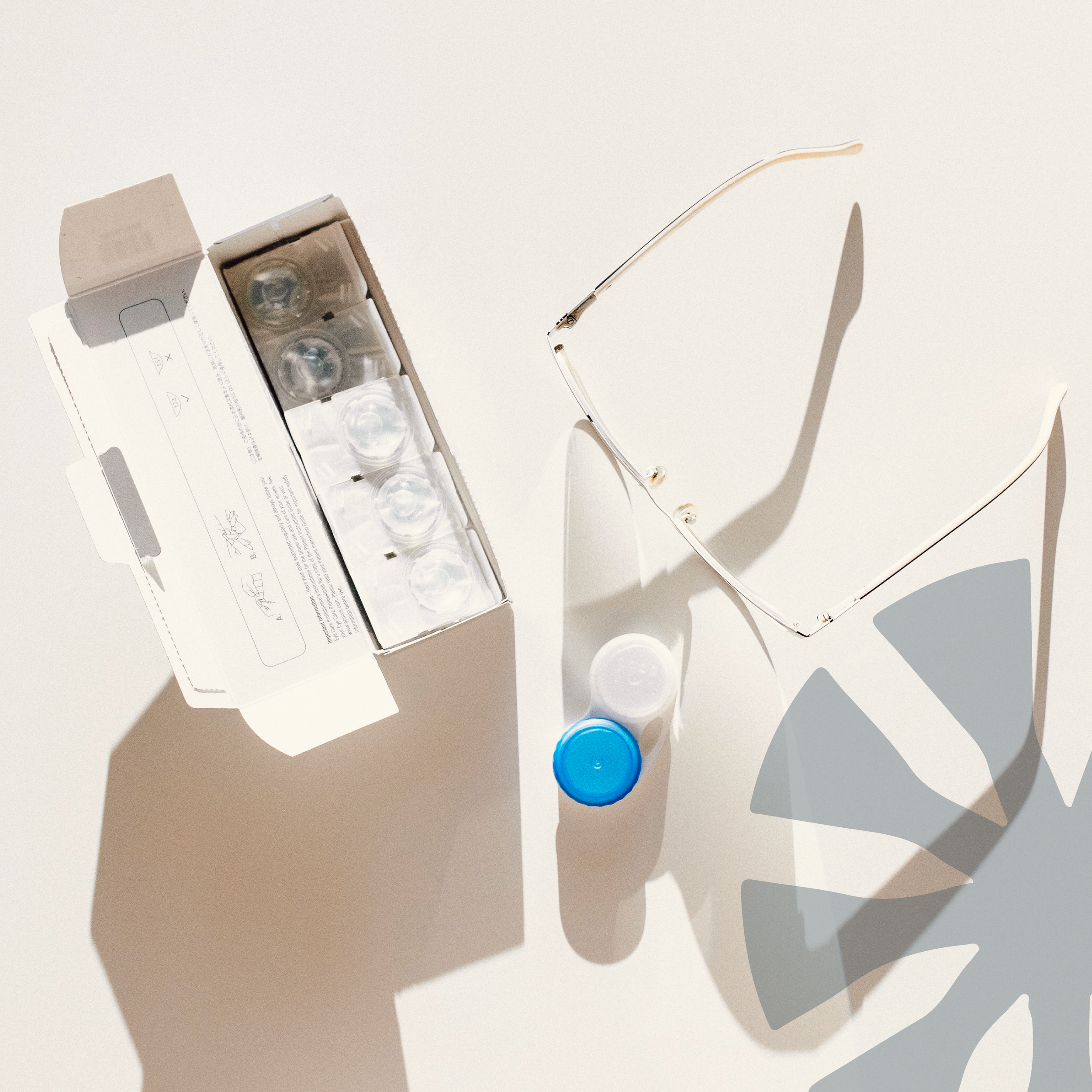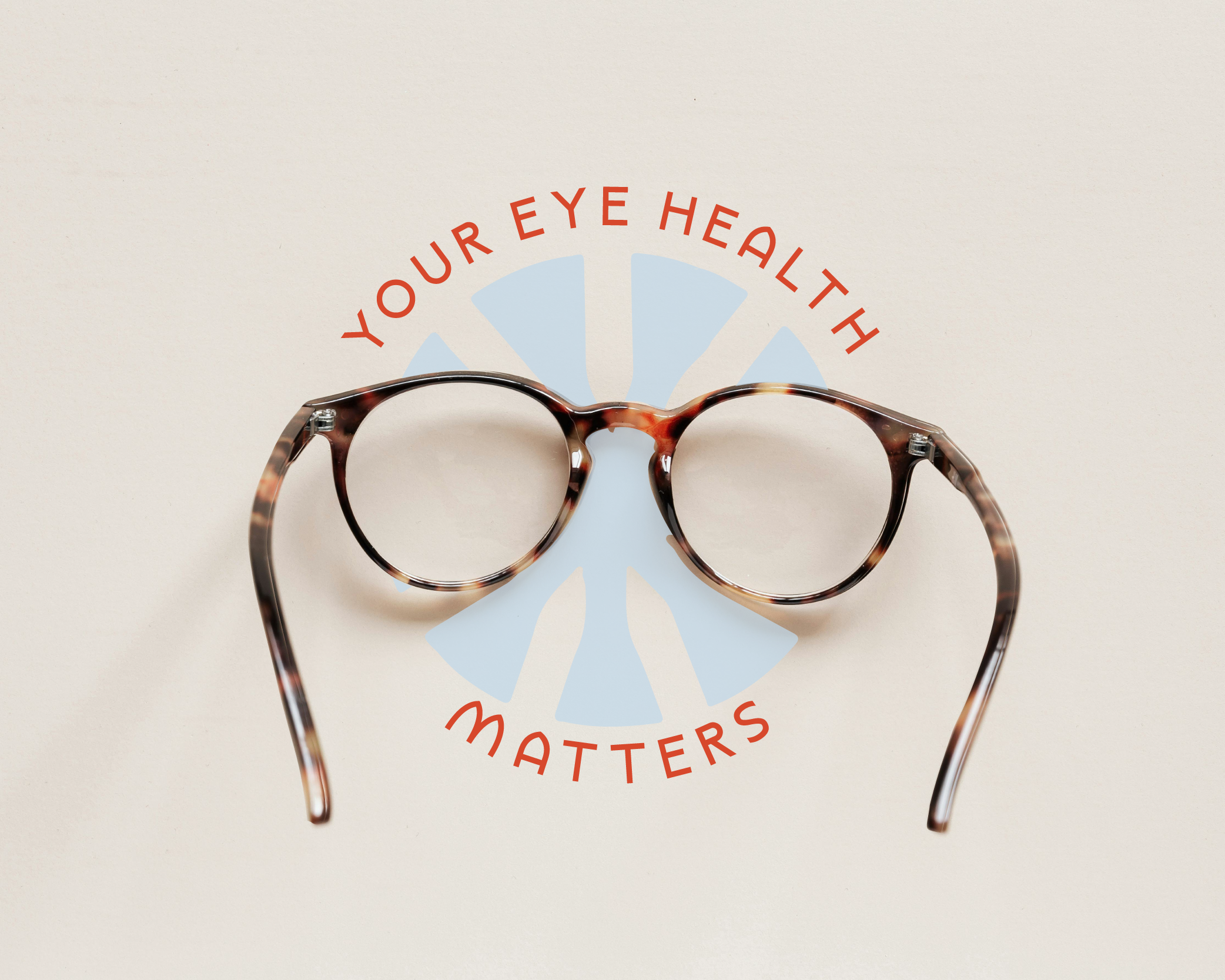
Your First Step Towards Eye Care Starts Here. Welcome to the Beginning of Vision Wellness.
Our Services
Myopia Control For Children
Myopia Control is the beginning of stopping nearsightedness in children, preventing their glasses from getting thicker every year, and ultimately ensuring healthy eyesight for their future.
Comprehensive Eye Exams
Learn more about what problems can be spotted with an eye exam, what’s involved in a comprehensive exam, and special considerations for kids and contacts.
Eye Emergencies
Eye emergencies, such as infections, styes, foreign objects, trauma, scratches, sudden vision loss, and light flashes or floaters, require prompt attention.
Dry Eye Disease & Treatment
Dry eye syndrome (DES) is a chronic condition that develops when your eyes do not produce enough tears to keep the eye’s surface lubricated.
Presbyopia Diagnosis & Treatment
After the age of 40, difficulty with near vision arises as the eye lens becomes less flexible. This condition is called presbyopia.
Management of Ocular Diseases
Utilizing cutting edge technology, we are diagnosing and managing diseases like glaucoma, macular degeneration, cataracts, and diabetic retinopathy with greater precision.
Astigmatism Diagnosis & Treatment
Common due to irregular cornea
or lens shape, is easily corrected with
glasses, contacts, or surgery.
Pediatric Eye Exams
80% of learning is visual. Regular eye check-ups are crucial for a child's development and learning.
Orthokeratology
Orthokeratology (ortho-k) reshapes the eye, fixing nearsightedness and astigmatism.
InfantSEE®
This service offers early detection of potential eye and vision problems at no cost. It is a one-time, comprehensive eye and vision assessment for babies, usually conducted between the ages of 6 and 12 months.
LASIK & Refractive Surgery
Co-Management
-
LASIK is a common, quick, and almost painless surgery correcting myopia, hyperopia, and astigmatism. It provides rapid vision recovery, often achieving 20/20 vision within 24 hours. It's a popular choice for those seeking an alternative to glasses or contacts, with the potential to reduce dependence on reading glasses for those over 40.
-
LASIK is suitable for those 18+ with healthy eyes and adequate corneal thickness. However, certain eye conditions may disqualify candidates. We offer pre-op exams and consultations, but it's essential to weigh personal needs, potential gains, and the associated risks.
-
LASIK, a quick outpatient procedure, takes about 15 minutes for both eyes. A flap is created on the cornea, the eye is reshaped with a laser, and the flap is replaced.
-
Wavefront LASIK, guided by computerized analysis, offers more precise corrections for subtle eye imperfections than standard LASIK, enhancing night-vision and reducing glare risk.
-
Post-LASIK, you'll use medicated drops and shields for a day, avoiding driving. Rest your eyes and use drops for a week or more. Expect improved vision the next day, but avoid rubbing your eyes. A follow-up visit ensures proper healing, with ongoing care available through co-management.
-
Remember to continue to schedule routine eye exams post – LASIK. Even with perfect vision you still need to have your eyes examined for glaucoma and other potential problems on a regular basis. Routine exams will help insure that your vision remains stable after LASIK.
Our Eye Health Library simplifies your journey to understanding eye health. Explore our resources to learn about vision mechanics, eye conditions, surgeries, and age-related changes in vision.
Empower yourself with knowledge for better eye care understanding.
Your Eye Health
FAQs
-
It is recommended to have a comprehensive eye exam at least once every two years, or more frequently if advised by your eye care professional.
-
Dilation allows the doctor to examine the retina and optic nerve for signs of eye diseases, even before symptoms occur. It involves using eye drops to temporarily widen the pupils.
-
Blue light is a type of high-energy visible (HEV) light emitted by digital screens. Extended exposure may contribute to eye strain. Blue light blocking coatings or specialized lenses can help reduce its impact.


